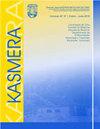委内瑞拉安第斯山脉低海拔农村地区地下水的物理化学和微生物特征
Q4 Medicine
引用次数: 0
摘要
人口的增长和人为活动增加了世界上地下水的污染率,因此,本研究的目的是通过理化和微生物特性来确定msamrida州农村地区四个地下井的水的可饮用性,以检查将其用作饮用水的可行性。结果表明,理化参数符合委内瑞拉规定。水中有各种各样的矿物质,以钙、钠和镁为主要阳离子,硬度主要是由于碳酸氢盐离子。同位素分布值表明存在两个含水层,井间没有水力连接。细菌学和寄生虫学分析检测到:异养细菌、总大肠菌群和假单胞菌,以及蛔虫、囊虫、贾第鞭毛虫和艾美耳虫,这些微生物可能来自化粪池的地下过滤,并通过砂质粘土壤土从表面渗透,这些微生物已经适应了水的物理化学特征。结果表明,三口井的水未经过滤、混凝、消毒等常规处理,不能用于生活用水。本文章由计算机程序翻译,如有差异,请以英文原文为准。
Caracterización fisicoquímica y microbiológica de aguas subterráneas de un sector rural a baja altitud en Los Andes venezolanos
Growth in human population and anthropogenic activities has increased the rate of groundwater pollution in the world, therefore, the purpose of this study is to determine the potability of water from four underground wells in a rural area of Mérida State, through the physicochemical and microbiological characterization, to check the feasibility of its use as drinking water. The results indicate that the physicochemical parameters comply with venezuelan regulations. The waters have a wide variety of minerals, highlighting Ca, Na and Mg as majority cations and a hardness basically due to bicarbonate ions. The values of the isotopic distribution suggest the existence of two aquifers without hydraulic connections between wells. Bacteriological and parasitological analysis detects: heterotrophic bacteria, total coliforms and Pseudomonas , as well as Ascaris spp., Blastocystis sp., Giardia sp., and Eimeria sp., probably derived from the underground filtration of septic tanks and percolated from the surface through the sandy clay loam soil, microorganisms that have adapted to the physicochemical characteristics of waters. The results show that the water from three wells cannot be used for consumption without some conventional treatment as filtration and coagulation, and disinfection process.
求助全文
通过发布文献求助,成功后即可免费获取论文全文。
去求助
来源期刊

Kasmera
医学-热带医学
CiteScore
0.02
自引率
0.00%
发文量
6
审稿时长
10 weeks
期刊介绍:
KASMERA is a scientific journal of the Department of Infectious and Tropical Diseases of the Faculty of Medicine. University of Zulia. Maracaibo Venezuela. Publishes an annual volume in two numbers (January-June and July-December). Accepts original articles, brief communications, clinical cases, essays and reviews, related to Tropical Medicine and Microbiology in general (bacteriology, mycology, parasitology and virology) in its different areas: morphology, biology, immunology, clinical, epidemiology and treatment, not only in human health but also in animal or environmental health, including food safety and safety. It is an open access journal that does not have an embargo period for the visualization of works, open access is protected by an international Creative Commons 4.0 license, which allows non-commercial use, distribution and reproduction without restrictions in any means, as long as the original work is duly cited. The magazine does not have article processing charges (APC) for any concept, that is, no charges are generated for the publication or edition of the manuscripts sent to the editorial committee.
 求助内容:
求助内容: 应助结果提醒方式:
应助结果提醒方式:


